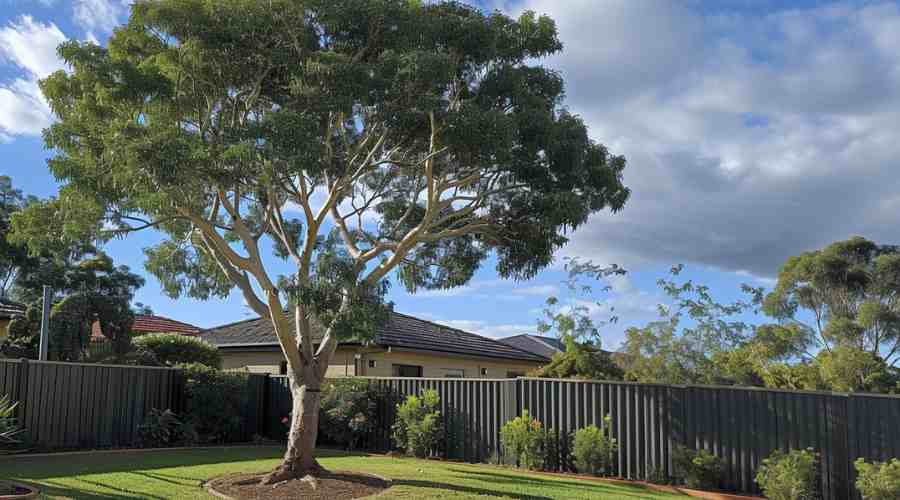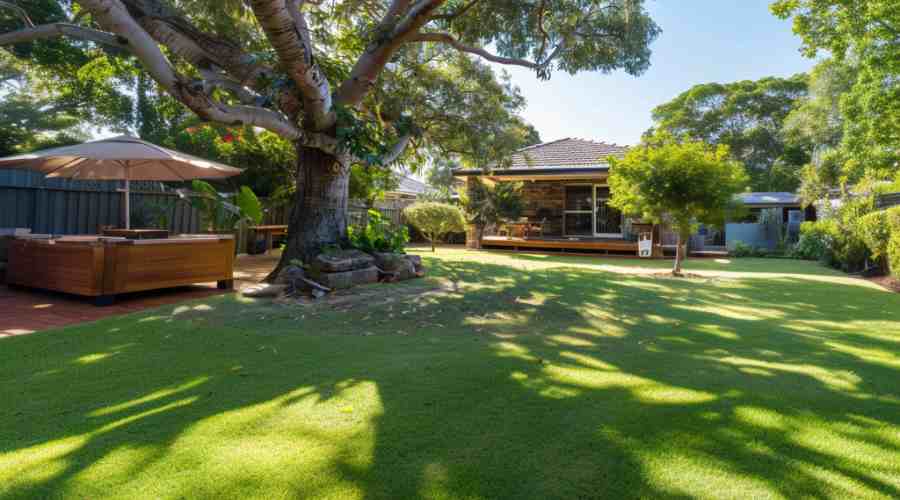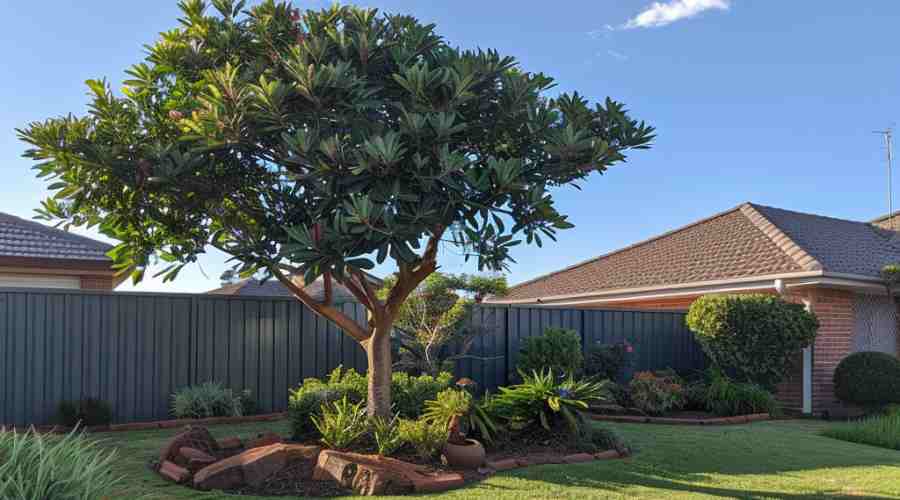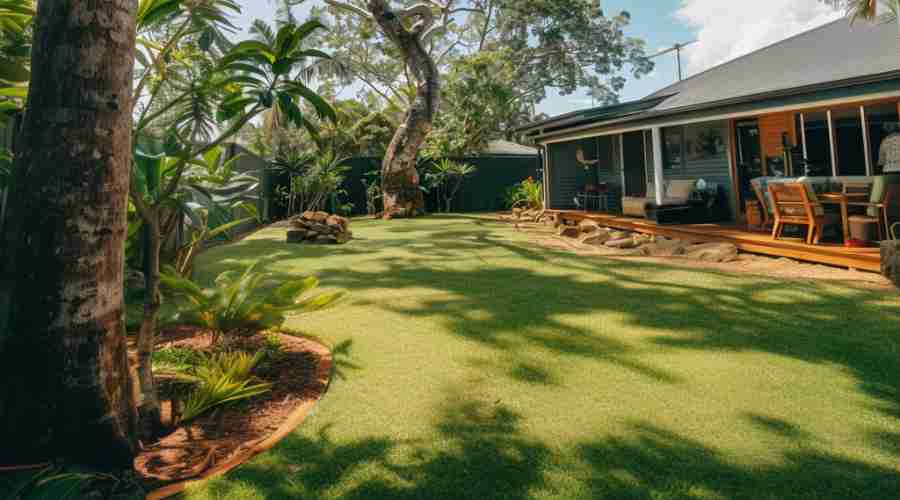Guide to Tree Removal in Brisbane
Tree Removal Brisbane Guide
Do you have trees on your Brisbane property that need care? Dealing with overgrown trees can be hard. Getting professional help from qualified tree removers is often the best choice. This guide tells you all you need to know about taking out trees.
Why Take Out Brisbane Trees?
There are many good reasons for removing trees:
- Safety – Dead, dying, sick or unstable trees can be risky. Removing them reduces dangers to people and property.
- Access and Space – Large trees blocking access or taking up too much space may need removal if heavy pruning isn’t an option.
- Light and Views – Overgrown trees blocking sunlight or nice views are common reasons for removal.
- Building Work – Taking out trees may be necessary to clear land for constructions.
- Fire Safety – Dense trees and plants close to homes raise bushfire risks. Strategic removal creates protective empty zones.
- Reduce Work – Fast growing or messy trees like Cottonwoods or Evergreen Figs may be taken out to reduce ongoing maintenance.
- Landscaping Goals – Removing unwanted trees makes way for more suitable and helpful replacements.
Taking out entire trees should always be a last choice. Where possible, partial removal of branches or careful pruning are better for tree health. But in many cases, full tree removal becomes the only workable option.
Benefits of Professional Tree Removal
Trying to remove big and tall trees yourself can be so dangerous, especially if you don’t have experience. The safest and smartest option is hiring professional arborists to handle the job safely, efficiently and legally.
Safety
Arborists use specialised equipment and advanced rigging methods to carefully take apart trees in a controlled way. This safe working method significantly reduces risks.
Knowledge
Qualified arborists have extensive knowledge and skills for checking trees and finding the best removal method. Their expertise also ensures nearby trees are not damaged.
Legal Compliance
Reputable tree services know all relevant laws, rules, planning schemes and protection zones in your council area. They handle necessary permits and manage legal requirements for you.
Clean Up
Good tree removal crews fully clean up the site, mulch or remove rubbish, minimise soil disruption and may grind out remaining tree stumps. This leaves a tidy site.
Speed
Working frequently with specialised tools means professional crews remove trees far quicker than regular homeowners could manage themselves.
Insurance Cover
If an accident or property damage does occur, established tree removal businesses have public liability insurance, protecting clients from problems and claims.
What Is a Tree Lopping?
Tree lopping involves cutting away branches and stems into sections rather than at specific pruning points. This technique is sometimes used to control the size and growth rate of trees, but is not the best method for maintaining overall tree health compared to careful and precision pruning.
When lopping is necessary, an experienced arborist will know how to make the right cuts to balance the tree’s growth needs with public safety. Severe lopping can leave trees looking unsightly or prone to disease and decay over time. We use lopping judiciously for certain overgrown trees where more precise pruning is impractical.
What Is a Tree Pruning?
Tree pruning is the careful and systematic removal of selected branches back to an appropriate branch collar or main stem. It requires precision and tree health knowledge to decide which branches to remove. The goal is shaping the canopy for safety clearances while sustaining the tree’s biological needs.
We prune to eliminate risks like falling branches, allow structures and vehicles to pass safely underneath, keep power lines clear, improve light penetration, promote healthy new growth and enhance the natural form of the tree. Precision pruning when the tree is young can also avoid more severe work later on. We prune trees with care according to industry standards.
What Is Tree Relocation?
Mature tree relocation involves carefully digging up an entire live tree with the root ball intact and moving it to a new planting site. This is only suitable for certain healthy tree types that can handle the transplanting process.
Factors like the tree’s age, species, size, condition and the timing of the move can determine success. We prepare younger, smaller deciduous trees with pruning in advance and protect the root balls with burlap wrapping. Careful excavation, loading, transport and follow up care give relocated trees the best chance to re-establish themselves. Some species like palms, conifers and tree ferns often don’t survive relocating.
What Is Stump Grinding?
After felling and removing the main trunks of cut trees, stumps are still left protruding from the ground with extensive root systems still embedded. We use specialised grinding equipment to remove remaining stumps and roots entirely, well below ground level. This leaves clean, flat ground that new planting or grass growth can easily establish in.
Stump grinding involves using mechanised grinders to break up and chip away wood material until all traces of the stump are gone. It is a precise process requiring operators skilled in handling the grinding tools around each stump’s unique shape and contours. Proper PPE and specialty machinery gives us fast and tidy stump removal. We clean up all the resulting wood chips so the site looks finished once we are done grinding.
What Is Tree Trimming?
Our tree trimming and size reduction services selectively prune branches and foliage to control the canopy spread. Unlike lopping, we make smaller precision cuts only on the outermost branch tips and leaves to retain a balanced, natural shape. The goal is reducing the tree’s overall dimensions for space or clearance needs while keeping it attractive and healthy.
This requires specialist knowledge of suitable reduction points on each branch structure. Indiscriminate hacking leaves ugly/harmful stubs that negatively impact tree biology and elevates safety issues like regrowth, deadwood accumulation and whole branch drop offs later on. Our arborists assess and implement trimming plans tailored to fulfil functional requirements for residential or public safety while supporting trees’ visual and horticultural value.
What Is Palm Tree Removal?
Removing tall palm trees over 3 metres poses an elevated challenge compared to other trees due to the fronds, crown shaft and narrow trunk needing dismantled gradually from the top down. This demands climbing skills to access cutting points out of reach from the ground. We use rigging equipment like cranes or tree climbing harnesses for arborists to safely access fronds before sectioning down the trunk in a controlled manner.
Palm removal needs well-coordinated dismantling of each high component to avoid uncontrolled falling material that can damage property or pose safety risks on the ground. We remove all palm refuse or arrange mulching onsite if required. The palm’s extensive root network also requires heavy machinery like backhoes to extract the stump after felling. Proper safety protocols are vital for difficult palm removals.
What Is Fallen Tree Removal?
Removing collapsed or storm damaged fallen trees requires prompt, flexible responses adapted to the tree’s precarious situation. Risk assessments decide safest extraction methods on a case by case basis. We stabilise dangerous leaners with rigging tools to safely dismantle pieces partially supported off the ground. Site access problems through narrow gates or over buildings needs creative solutions to cut then haul big sections clear without worsening building damage.
We can return later once it’s stable to grind problematic stump remains. For simpler flattened trees, we chop the trunk and branches into portable sizes to carry out to trucks. Safety is paramount dealing with unpredictable fallen trees – we set exclusion zones preventing vehicle or people access near unsafe remnants that may shift or drop unpredictably even after initial cleaning. Prompt action clears dangers and debris so properties can recover.
What Is Dead Tree Removal?
Removing dead and decaying trees eliminates falling branch/trunk hazards towards houses, cars, pedestrians and other valuable assets nearby. Any compromises in integrity demands urgent action for safety. We assess structural defects like fungal builds ups, cracks, hollows and degrade with scanning equipment then action tree extraction before catastrophic collapse.
Diseased trees or those infested by wood boring insects need removal and chipping to prevent further landscape spread. We remove all rubbish and wood waste, then grind stumps below ground level. For easier access we use tree rigging equipment like Cranes and EWP cherry pickers adapted to tree conditions. Eliminating dead trees swiftly returns safety and appeal to properties where spreading decline threatens increasing problems.
What Is Land Clearing?
Legally clearing natural standing plants prepares land or big development sites for buildings, access roads and buildings. Removing trees, shrubs and scrub needs proper plans and council OKs detailing scope and fix. Our pro tree experts, plant specialists and operators clear set zones using burning tools, mulchers or tree pulling equipment that won’t upset the surrounding native system.
We can remove stumps and level/pack the soil for building pads after clearing finishes. Careful topsoil handling during cutting and root removal keeps organic nutrients for future site fix. Clearing debris gets chipped into mulch for landscaping instead of leaving risky fuel loads. Our teams exactly mark clearing limits and give wildlife spotters ensuring minimal nature impacts from needed site preps.
What Is Mulching?
Cutting removed trees and green waste into mulch stuff stops tons of trash ending up in landfills. Natural wood chip mulch made from our tree services makes excellent ground cover for moisture keeping/weed stopping in gardens and projects. Screened mulch with different sizing grades suits various planting, business or council uses.
We give removed tree waste new life keeping community green spaces going strong. Wood chip mulch slowly enriches soil as it breaks down. Our tree experts specifically check tree stock before removal to avoid mulching bad wood having fungus or pests into landscapes for healthy plant growth. We also store logs good for milling before making top quality mulch with the rest. Our fix-focused processes target going for long time.
Equipment Used
Modern professional arborists and tree surgeons have an expansive machinery toolkit allowing fast precise removals:
Chainsaws
Chainsaws with specially hardened saw chains remain the number one tool for segmenting tree limbs and dismantling branches during pruning or falling. Larger chainsaw bars over 20” assist felling trunks efficiently. Battery powered electric saw options reduce noise/vibration.
Wood Chippers
Heavy duty industrial wood chippers powered by hundreds of horsepower quickly chew debris like small branches an foliage into landscaping grade mulch material. Their shear drum forces raw material through rotating blades.
Stump Grinders
Same to giant mechanised teeth, these hardcore grinder tools utilise tungsten or carbide cutter wheels and drill bits to aggressively grind stubborn stumps and surface roots down 30cm+ underground. Their rotating heads and side sweep plates make light work of debris.
Truck Cranes
Truck mounted knuckle boom cranes become essential when hauling whole tree trunks and heavy logs across sites where roots prevent skid access. Their generous lifting capacity and reach assist arborists to lift waste timber cleanly over fences, buildings and obstacles to waiting trucks.
Tub Grinders
This equipment offers many solutions for waste wood management. Entire felled tree trunks and stumps are fed into a large tub room where rotating hammers crush them into business grade mulch ideal for landscaping and business uses. They ensure zero product waste.
Root Ball Spades
These tough custom tools help dig and cut aimed trenches around root zones before whole trees get carefully pulled and moved using straps onto waiting trucks and trailers, ready for transportation to their new planting place with minimal root problems at either end. Their key role gives mature trees the best living chances through move trauma.
So whether it’s climbing rigs, cutting saws, safety ropes, pole saws, log splitters, pulls or other needs – pro tree crew crews put in heavily in the newest industry standard gear letting jobs happen well and safely no matter tricky site conditions.
Signs You Need Tree Removal
In many cases several issues make taking out trees necessary. Common triggers indicating removal is needed include:
- Visible structure problems like hollows, cracks or weak branch joints
- Dead or dying bits with yellowing leaves
- Noticeable leaning or changed ground levels affecting stability
- Roots damaging pipes, paths or foundations
- Branches overhanging buildings, risking tile or roof damage
- Reduced access for emergency vehicles, Council trucks etc
- Branches at risk of breaking off during storms
- Trees too close to power lines risking electrocution
- Stumps growing back vigorously despite repeated cutting back
- Dense trees blocking desired views from windows or sites
- Too much uncontrolled plants increasing fire danger
Where one or more of these tree issues exist, removal or cutting back substantially becomes the only sensible fix.
Tree Removal Licensing Rules
Commercial tree removal operators working on private and public land in Brisbane must have a Queensland Business License for tree surgery services. Workers doing rigging, cutting or climbing require minimum Cert III Arboriculture qualifications.
For specialist work near live power lines, operators must pass Powerline vegetation management accreditation through State training organisations.
Council planning approval is usually not required for removing trees on private land. But rules can change locally. Before any big tree removal, good services double check all legal needs.
Tree Removal Permits and Regulations
Several situations can trigger legal obligations regarding tree removal work:
- Removing trees listed as “Significant” requires prior Council approval
- Heritage properties – trees form part of a site heritage listing
- Environmental protections mandate keeping certain tree types
- Vegetation offset laws dictate replacing removed trees
- Leasing arrangements likely require formal permission from landlords/agents before removal
- Unit block by-laws potentially restrict tree removal
To ensure tree removal work complies with regulations, it is critical homeowners partner with properly certified professionals who understand specific area rules. Doing so avoids illegal clearing fines or disputes later.
Dangers of DIY Tree Removal
While it seems simple to just grab a chainsaw and chop down small to medium trees, severe safety risks make DIY work extremely dangerous:
- Chainsaw kickback can severely injure users from bad technique
- Felling trees need ropes, trees easily drop in unintended directions
- Wind conditions dramatically change falling behaviour
- Dead branches known as “widow makers” overhead can collapse unexpectedly
- Hidden power lines introduce potential electric shock dangers
- Escaping hydraulic oil from punctured hoses poses health risks
- Eye injuries are common from flying wood chips and debris
- Hearing damage is likely near constant loud chainsaw noise
- Falling trees or swinging limbs can crush users
Considering the serious safety threats, DIY is never recommended. Leaving the complex job to trained professionals substantially lessen risks.
Choosing a Good Tree Removal Company
With lots of tree removal operators in Brisbane, picking quality arborists feels overwhelming at first. Use this checklist when comparing potential services:
Licensing, Insurance and Qualifications
- Have all required Queensland arborist business licenses
- Workers minimum Cert III Arboriculture for climbers and crew
- $10M+ public liability and worker insurance cover
Background and Reputation
- Great recent customer feedback on multiple websites
- Specialise specifically in professional tree removal – not general handymen
- Provide legitimate company details like ABN and address
Services and Abilities
- Handle trees of any size from saplings to 25 metre gum trees
- Offer extra useful services like mulching, stump removal and deadwooding
- Available urgently including after hours and weekends
Legal Compliance
- Know all tree removal regulations on your land type
- Manage council applications and permissions required
- Leave sites clean and ready for new plants/grass
Professional Standards
- Single contact from first meet to finished work
- Detailed quotes outlining proposed tree taking down method
- Modern equipment reducing errors and ground damage
Value for Money
- Fair price based on complexity and scale of removal
- Avoid suspiciously cheap quotes below normal costs
- No surprise add-ons – all projected expenses shown upfront
Carefully picking an arborist using criteria like this reduces risks and sets fair quality and price expectations.
Average Tree Removal Costs in Brisbane
Pricing tree removal involves assessing many points like height, location issues and access difficulty. Expect around:
- Small Trees under 10 metres – From $250 – $600 per tree
- Medium Trees $600 – $1500 each
- Large Trees over 12 metre – $1500+ per tree
Other factors affecting quotes:
- Tight access ramps up quotes
- More labour needed removing palms – fiddly jobs
- Stump grinding around $100 – $200 per stump
- Travel fees further out of Brisbane
- Weekend rates often higher
Reputable arborists provide free assessments and obligation-free quotes covering all costs for your specific situation. Remember cheapest options are rarely best long term for protecting trees.
About Brisbane
Brisbane has unique tree challenges. The subtropical climate lets many native and exotic trees grow well. Fast spreading trees like Figs, Cottonwoods and Camphor Laurels shape neighborhoods. But uncontrolled growth threatens buildings and power lines.
Cramming more homes sees unsuitable trees planted too close. This drives complex removal when canopies cover rooflines. Severe storms also ruin trees yearly.
Council maps thousands of “significant” public trees needing okay for trimming or removal. Ignoring rules has brought big fines. The urban forest helps cut heat.
The hilly layout makes removal tough where properties have limited boundaries or steep slopes. Advanced rope work safely takes down big trees piece-by-piece to protect nearby fences and power lines.
Brisbane requires more green corridors and replacement trees to offset losses. But new plant rates lag clearance in fast-growing outer suburbs. Consulting arborists have big responsibility advising sustainable replacements.
Key Brisbane Locations and Tree Considerations
Navigating native tree rules across Queensland can be hard. Protection rules tighten in certain zones. Key facts for Brisbane areas:
Northside
This has leafy suburbs like Chermside, Stafford, Albany Creek to coastal spots like Brighton, Sandgate. Main trees are Pines, Camphor Laurels, Paperbarks, Weeping Figs. Removing protected trees near waterways needs Council okay and offset plantings. Watch power lines on the coast.
Southside
It has suburbs like Mount Gravatt East, Sunnybank Hills to coastal spots like Wynnum, Chandler. Main trees are Flooded Gums, Bloodwoods, Forest She-Oaks. Strict rules for street trees and disturbing over 25 square metres. Review tributary creeks.
Eastern
It has bayside suburbs like Balmoral, Bulimba inland to Camp Hill, Coorparoo, Gumdale. Habitat orders can mandate keeping stepping stone trees. Potential conflicts with Council’s Street Tree Plan.
Western
This has outer suburbs like Jindalee, Pinjarra Hills to Ipswich towns like Brassall, Marburg. Rapid growth sees farmers subdivide. State laws govern clearing mature native Dry Rainforests or Ironbark Woodlands under reef rules. Arborist expertise vital navigating exemptions.
Consulting qualified arborists is key to know specific tree rules for work across Brisbane areas. Attempting unapproved removal in protected zones risks fines and replanting orders.
FAQ
What equipment do you use?
Professional arborists access a full toolkit including chainsaws, wood chippers, stump grinders, cranes, rigging ropes, climbing harnesses. Teams pick the best tools for each job.
Will removing trees affect my property value?
In most cases a detailed arborist report on defects of unsafe trees means taking them out improves safety without hurting value. New plants quickly restore natural appeal.
Is a bond needed if renting?
Tenancy laws need landlords approval before removing leased property trees. Good services help manage notifications and submit bonds protecting owner rights.
Are you insured?
Unlike solo handymen, all professional tree removal companies have standard $10M-$20M public liability insurance, protecting clients against damages.
Keeping Trees Healthy
Where possible, pruning and tree surgery give better long term solutions than removing trees completely. To maximise tree lifespan:
- Water deeply once per week during dry times
- Apply organic mulch without contact on trunks
- Prune carefully for shape/safety rather than heavy lopping
- Fertilise mildly in Spring with quality slow release mixes
- Monitor for pests and fungi problems seeking quick expert help
- Consider professional lightning protection systems for tall exposed trees
Proactive tree care instead of repeated wholesale clearing is always more sustainable long term.
This guide gives you confidence dealing with removing or protecting valued trees around your Brisbane property. Stay safe and think sustainably.




